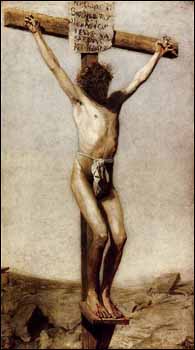Free E-Mail
Bible Studies
Beginning the Journey (for new Christians). en Español
Old Testament
Abraham
Jacob
Moses
Joshua
Gideon
David, Life of
Elijah
Psalms
Solomon
Songs of Ascent (Ps 120-135)
Isaiah
Advent/Messianic Scriptures
Daniel
Rebuild & Renew: Post-Exilic Books
Gospels
Christmas Incarnation
(Mt, Lk)
Sermon on the Mount
(Mt 5-7)
Mark
Luke's
Gospel
John's Gospel
7 Last Words of Christ
Parables
Jesus and the Kingdom
Resurrection
Apostle Peter
Acts
The Early Church
(Acts 1-12)
Apostle Paul
(Acts 12-28)
Paul's Epistles
Christ Powered Life (Rom 5-8)
1 Corinthians
2 Corinthians
Galatians
Ephesians
Vision for Church
(Eph)
Philippians
Colossians,
Philemon
1
& 2 Thessalonians
1 & 2 Timothy,
Titus
General Epistles
Hebrews
James
1 Peter
2 Peter, Jude
1, 2, and 3 John
Revelation
Revelation
Conquering Lamb of Revelation
Topical
Glorious Kingdom, The
Grace
Great Prayers
Holy Spirit, Disciple's Guide
Humility
Lamb of God
Listening for God's Voice
Lord's Supper
Names of God
Names of Jesus
Christian Art
About Us
Podcasts
Contact Us
Dr. Wilson's Books
Donations
Watercolors
Sitemap
Appendix 2E. What Crucifixion Was Like in Jesus' Day
 Thomas Eakins (American painter, 1844-1916), 'The Crucifixion' (1880), Oil on canvas, 96 x 54 inches, Philadelphia Museum of Art. |
The cross in Jesus' day was an instrument of torture and execution, pure and simple. There wasn't a figurative use of "cross" as a "burden" or "trial" in those days. Death on the cross was shameful, excruciating, and often protracted. An ancient Greek poem describes it this way:
"Punished with limbs outstretched, they see the
stake as their fate;
they are fastened (and) nailed to it in the most bitter torment,
evil food for birds of prey and grim pickings for dogs."1430
From the third century BC onwards there is evidence of the use of Latin crux as a vulgar taunt among the lower classes, found on the lips of slaves and prostitutes, the English equivalent of which might be "gallows-bird" or "hang-dog."1431 Hengel says that the attitude of people of the ancient world was not casual or a matter of indifference. "It was an utterly offensive affair, 'obscene' in the original sense of the word."1432
There was no "norm" for execution on the cross, though it often included flogging beforehand, the victim carrying the beam to the place of execution, being nailed to it with outstretched arms, raised up, and seated on a small wooden peg. But Seneca indicates there were many variations:
"I see crosses there, not just of one kind but made in many different ways: some have their victims with head down to the ground; some impale their private parts; others stretch out their arms on the gibbet."1433
Josephus, an eyewitness of Roman cruelty to the defenders at the fall of Jerusalem in 70 AD, gives us a gruesome picture:
"... They were first whipped, and then tormented with all sorts of tortures before they died, and were then crucified before the wall of the city. This miserable procedure made Titus greatly to pity them, while they caught every day five hundred Jews; nay, some days they caught more... The main reason why he did not forbid that cruelty was this, that he hoped the Jews might perhaps yield at that sight, out of fear lest they might themselves afterwards be liable to the same cruel treatment. So the soldiers, out of the wrath and hatred they bore the Jews, nailed those they caught, one after one way, and another after another, to the crosses, by way of jest, when their multitude was so great, that room was wanting for the crosses, and crosses wanting for the bodies."1434
 Lessons compiled in 805-page book in paperback, Kindle, & PDF. |
Endnotes
[1430] Psuedo-Manetho, Apotelesmatica 4:198ff, cited by Martin Hengel, Crucifixion (Fortress Press, translated 1977), p. 9.
[1431] Hengel, pp. 9-10.
[1432] Hengel, p. 22.
[1433] Seneca, Dialogue 6 (De consolatione ad Marciam) 20.3. Cited by Hengel, p. 25.
[1434] Josephus, Wars of the Jews, 5, 11, 1.
Copyright © 2025, Ralph F. Wilson. <pastor![]() joyfulheart.com> All rights reserved. A single copy of this article is free. Do not put this on a website. See legal, copyright, and reprint information.
joyfulheart.com> All rights reserved. A single copy of this article is free. Do not put this on a website. See legal, copyright, and reprint information.
 |

|
In-depth Bible study books
You can purchase one of Dr. Wilson's complete Bible studies in PDF, Kindle, or paperback format -- currently 48 books in the JesusWalk Bible Study Series.
Old Testament
- Abraham, Faith of
- Jacob, Life of
- Moses the Reluctant Leader
- Joshua
- Gideon
- David, Life of
- Elijah
- Psalms
- Solomon
- Songs of Ascent (Psalms 120-134)
- Isaiah
- 28 Advent Scriptures (Messianic)
- Daniel
- Rebuild & Renew: Post-Exilic Books
Gospels
- Christmas Incarnation (Mt, Lk)
- Sermon on the Mount (Mt 5-7)
- Luke's Gospel
- John's Gospel
- Seven Last Words of Christ
- Parables
- Jesus and the Kingdom of God
- Resurrection and Easter Faith
- Apostle Peter
Acts
Pauline Epistles
- Romans 5-8 (Christ-Powered Life)
- 1 Corinthians
- 2 Corinthians
- Galatians
- Ephesians
- Philippians
- Colossians, Philemon
- 1 & 2 Thessalonians
- 1 &2 Timothy, Titus
General Epistles
Revelation
Topical

 To be notified about future articles, stories, and Bible studies, why don't you subscribe to our free newsletter, The Joyful Heart, by placing your e-mail address in the box below. We respect your
To be notified about future articles, stories, and Bible studies, why don't you subscribe to our free newsletter, The Joyful Heart, by placing your e-mail address in the box below. We respect your